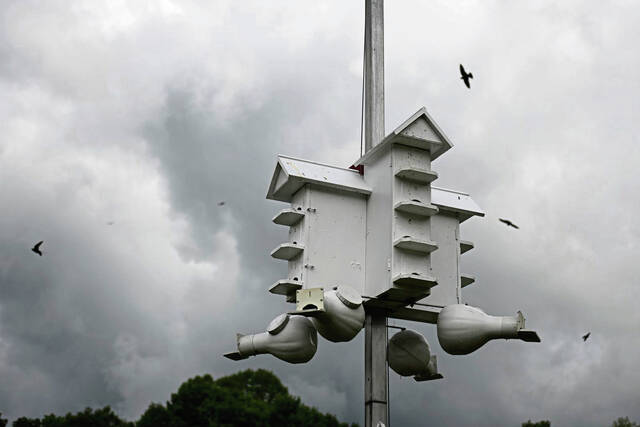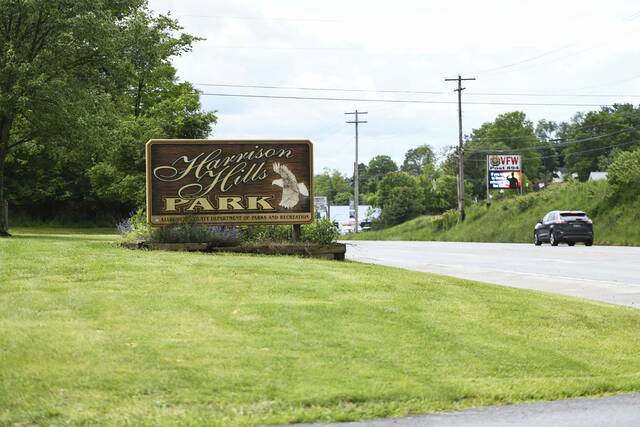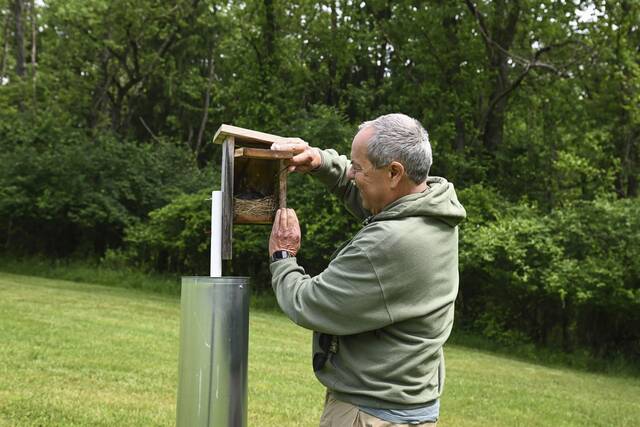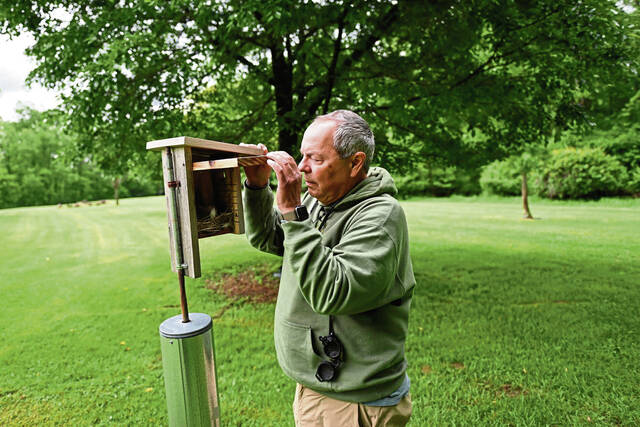Allegheny County Parks create economic spillover in nearby municipalities
Dave Brooke spends at least three days a week at Harrison Hills Park, checking for nesting success in the wooden bluebird boxes that dot the lawns in the Allegheny County-owned space.
Birding and conservation are among a number of activities that draw people to the 500-acre park off Freeport Road in Harrison.
“I originally started going to the park because my kids played soccer,” Brooke said. “If you stop and look around, there’s something for every age: hiking trails, dog park, playgrounds, mountain biking, horseback riding and tons of other stuff.”
It matters that the park is vibrant, according to the first-ever economic impact study of the nine county parks.
Facilitated by the nonprofit Allegheny County Parks Foundation, the study was conducted by 4Ward Planning and paid for by the Richard King Mellon Foundation.
A healthy park helps buoy finances in surrounding municipalities by contributing millions each year through tourism, recreation and environmental benefits, the study showed.
Well-maintained and active parks also drive up property values and create jobs — up to 64 positions a year.
The nine county campuses include Harrison Hills, Deer Lakes Park, Boyce Park, Hartwood Acres, North Park, South Park, Settlers Cabin, Round Hill Park and White Oak.
More than 23 million people visit the parks each year, up 12.5% from 2016 — including more than 7.2 million people from outside the county.
Key findings of the study showed that revenue generated from out-of-towners alone amounts to more than $8.4 million every year.
“From boosting property values and attracting tourism to reducing costs through their environmental benefits, our parks play a vital role in the financial health of our region,” county Executive Sara Innamorato said. “The study underscores the significant return on investment that parks bring to our local economy.”
Brooke believes that “without a doubt.” He has seen firsthand the boost to local businesses when people spill out of Harrison Hills and stop for dinner or ice cream in Natrona Heights, Freeport or Tarentum.
Having been a member of the Friends of Harrison Hills advocacy group for seven years, Brooke said he likely spends more time at the park than the average person.
He interacts with people who attend programs at the Environmental Learning Center or compete in the Rachel Carson Challenge, part of which runs through the park.
“There’s a broad constituency that use every part of the park,” he said.
He added: “There’s so much close by, whether it’s coffee or Walmart, that I definitely think there’s an economic spillover.”
Across the country, parks are powerful drivers of tourism and economic growth.
In 2021, parks and recreation departments in the U.S. generated more than $201 billion in revenue, according to Impact Parks. The Tennessee-based company focuses on developing and managing community parks and green spaces.
The county has one of the largest, most established park systems in the country, said Joey-Linn Ulrich, executive director of the Allegheny County Parks Foundation.
They have an estimated total real estate assessment of nearly $87 million and play a vital role in the value of single-family housing stock.
There are 7,660 single-family homes within a 2,000-foot radius of the county’s nine parks, totaling $1.6 billion in county assessed property values. North Park has the highest total property values — $704.8 million — for single-family homes in that radius.
County parks boast more than 200 miles of trails, 279 picnic shelters, four pools, two golf courses, four lakes, 23 creeks, two skating rinks, a ski slope, an exhibition farm and an observatory, among other amenities.
They cover more than 12,000 acres of fields, natural forests, ponds, meadows and recreational facilities. Of that area, more than 9,100 acres are tree canopy, which bumps up the environmental benefits, Ulrich said.
Notably, she said, the parks provide $3 million a year in air pollution reduction value and $1.7 million a year in carbon sequestration value, or the ability of trees to absorb carbon dioxide through photosynthesis. That helps mitigate climate change by reducing greenhouse gases.
Ulrich said the results of the study confirm “what we’ve always known — that our county parks are not just places for recreation, but vital economic assets.”
Tawnya Panizzi is a TribLive reporter. She joined the Trib in 1997. She can be reached at tpanizzi@triblive.com.
Remove the ads from your TribLIVE reading experience but still support the journalists who create the content with TribLIVE Ad-Free.





